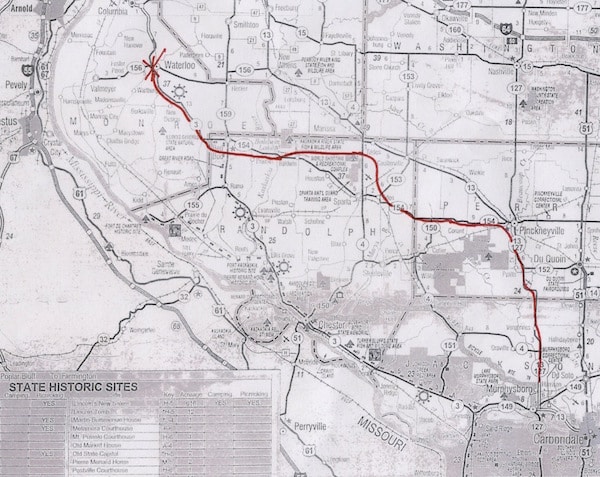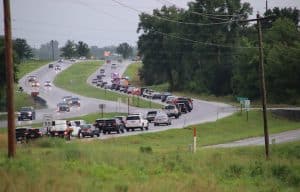Connector task force making progress

Only a few months after legislation passed in Springfield extending the deadline for its work, the Southwest Illinois Connector Task Force is making progress.
The task force was created during last year’s veto session to study the cost, feasibility, economic impact, funding options and environmental impact of a four-lane highway from Waterloo to Murphysboro.
Since state Sen. Paul Schimpf (R-Waterloo) and state Rep. Nathan Reitz (D-Steeleville) passed a bill this spring extending the deadline for that report. The group has until the end of this year to submit its findings to the General Assembly.
One of the highlights of the group’s progress is that it has a focused study area.
This area is where the task force thinks two-lane roads could be expanded to four-lane highways, though it can not call those places a proposed route due to regulations.
“One of the things that was foremost in our mind was we didn’t to create new four-lane roads somewhere,” task force chairman and Randolph County Commissioner Marc Kiehna said. “We wanted to expand two-lane roads.”
The focused study area would expand roads including Route 3 south of Waterloo, Route 154 near Sparta and Route 127 near Pinckneyville.
Construction would be done in phases, with the group eyeing a section of roadway between Murphysboro and Vergennes as its first phase.
It believes that would work because studies have already been conducted in that area and town meetings have been held.
Those steps were taken because the task force is the current iteration of a coalition that has been working to make this highway happen the last several years.
The project overall is one regional leaders have considered for decades.
“That’s low-hanging fruit, as far as I’m concerned,” Kiehna said of that potential first phase. “If we can get a (Better Utilizing Investments to Leverage Development) grant or something for that, that would be ideal.”
The next phase, potentially, could be from Waterloo to the World Shooting and Recreational Complex in Sparta, which is where the task force met Friday morning.
Kiehna said that is not guaranteed because the group still needs to conduct the proper studies and hold town meetings. He also pointed out the importance of not overwhelming towns along the route by building in segments.
“Growth is important in towns, but people don’t want too much growth too fast,” Kiehna noted.
Before it can begin construction, however, the task force needs to find funding, which was a main topic of Friday’s meeting, the fifth the group has had so far.
The group is investigating grants it could apply for, with a particular emphasis on a BUILD grant from the U.S. Department of Transportation.
To get that money, the group’s application would need to be sponsored by a local municipality like Jackson County or, ideally, the Illinois Department of Transportation. The application would also include partners like other municipalities.
Schimpf said it would be more realistic to get a local municipality as sponsor because IDOT can only sponsor three projects a year.
He also spoke about the task force potentially getting funding from the recently passed capital bill.
“IDOT is still going to be evaluating horizontal capital projects in accordance with the six-year plan,” Schimpf explained. “It’s not a case of individual representatives or senators saying ‘you have to build this highway because it’s what I want.’”
Carrie Nelson, a program development engineer with IDOT who serves on the task force, said the group should have as much work done as it can to increase chances of getting some of that money.
The highway may very well require multiple funding sources, as the price tag could be fairly hefty.
“I think it’s reasonable to consider, when you talk about planning dollars and constructing dollars and all of that, $400 million or somewhere in that range,” Kiehna estimated.
Kiehna argued that cost will be worth it to the entire region.
“When I think about future generations and I think about economic development and jobs for my grandchildren and their children, we need to do something in this particular area to support that,” he said.
Most likely, the coalition that drove this project will take up the mantle once again after this task force disbands because construction has no estimated start or end date but would not begin before then.
In the meantime, the task force plans to spend time at its next meeting determining what it needs to put in its report to the state






